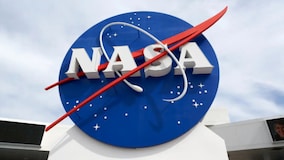Blackout: Multiple X-class solar flares hit the US, knocking out radio signals across the country
The US was hit with several X-class solar flares earlier this week, which caused a major radio blackout throughout the country. X-Class solar flares are considered to be the most intense category of solar flares

The US was hit with several X-class solar flares earlier this week, which caused a major radio blackout throughout the country. X-Class solar flares are considered to be the most intense category of solar flares
Although the Sun is responsible for maintaining a pleasant temperature on our planet, it also serves as the origin of significant disturbances from time to time.
Recently, two massive solar flares emerged from the Sun, which led to the disruption of radio signals across the United States. Solar physicist Keith Strong informed Space.com that the X1.5 Flare created a strong R3 radio blackout event on the sunlit side of the Earth, affecting regions such as the US, Canada, and the Pacific Ocean.
Radio blind
On Monday, August 7, a second solar flare, characterized as a high-frequency radio occurrence by the National Oceanographic and Atmospheric Administration, impacted the Earth with its peak activity manifesting at 4:46 PM Eastern Time. Designated as an X1.5 flare, this solar event belongs to the most intense category of X-class solar flares according to EarthSky. The outcome of the flare encompassed the deterioration and loss of high-frequency radio signals, primarily on the illuminated portion of the planet.
Related Articles
NASA tweeted following the Monday event that solar flares are potent surges of radiation.
“Solar flares are powerful bursts of radiation. Harmful radiation from a flare cannot pass through Earth’s atmosphere to physically affect humans on the ground,” NASA tweeted following Monday’s event. “However—when intense enough—they can disturb the atmosphere in the layer where GPS & communications signals travel.”
While the harmful radiation cannot traverse Earth’s atmosphere to directly affect humans on the ground, these flares possess the capability, when exceptionally forceful, to disrupt the atmospheric layer through which GPS and communication signals travel.
Two solar flares within days
Preceding the Monday solar flare was another solar outburst that transpired merely two days earlier, peaking at 6:21 PM Eastern Time on August 5, as reported by NASA. This solar flare, classified as another X-class occurrence, exceeded Monday’s flare slightly in strength, measuring an intensity of X1.6.
Solar flares can impact our terrestrial environment by disturbing radio signals, and they can also pose risks for space travel. In the previous September, the Solar Orbiter spacecraft jointly operated by ESA and NASA encountered some of the Sun’s plasma due to a coronal mass ejection emitted by the star a few days before. Fortunately, the Solar Orbiter was designed to endure the tumultuous heliosphere, resulting in its survival. Nonetheless, unprepared satellite missions could face insurmountable challenges posed by solar storms.
also read

NASA’s Hopes Dashed: May not be able to land astronauts on the Moon in Artemis 3 mission
NASA had initially planned to launch the Artemis 3 mission to the moon in December 2025, and land astronauts on the south pole. However, now, NASA believes that they may not be able to launch the mission, essentially because of SpaceX

What happens if someone dies on the Moon, Mars or anywhere in space?
What happens when a tragedy strikes in space? If someone dies on the Moon, the crew would return home with the body in a few days following NASA’s protocol. Death on a mission to the red planet would be different

NASA-Flix: US space body to launch their own streaming service, site already up, app coming soon
NASA is also planning to be a major player in the streaming scene, thanks to a whole new service they are about to launch called NASA+. This is a part of soft rebranding exercise ahead the launch of the Artemis mission to the moon


